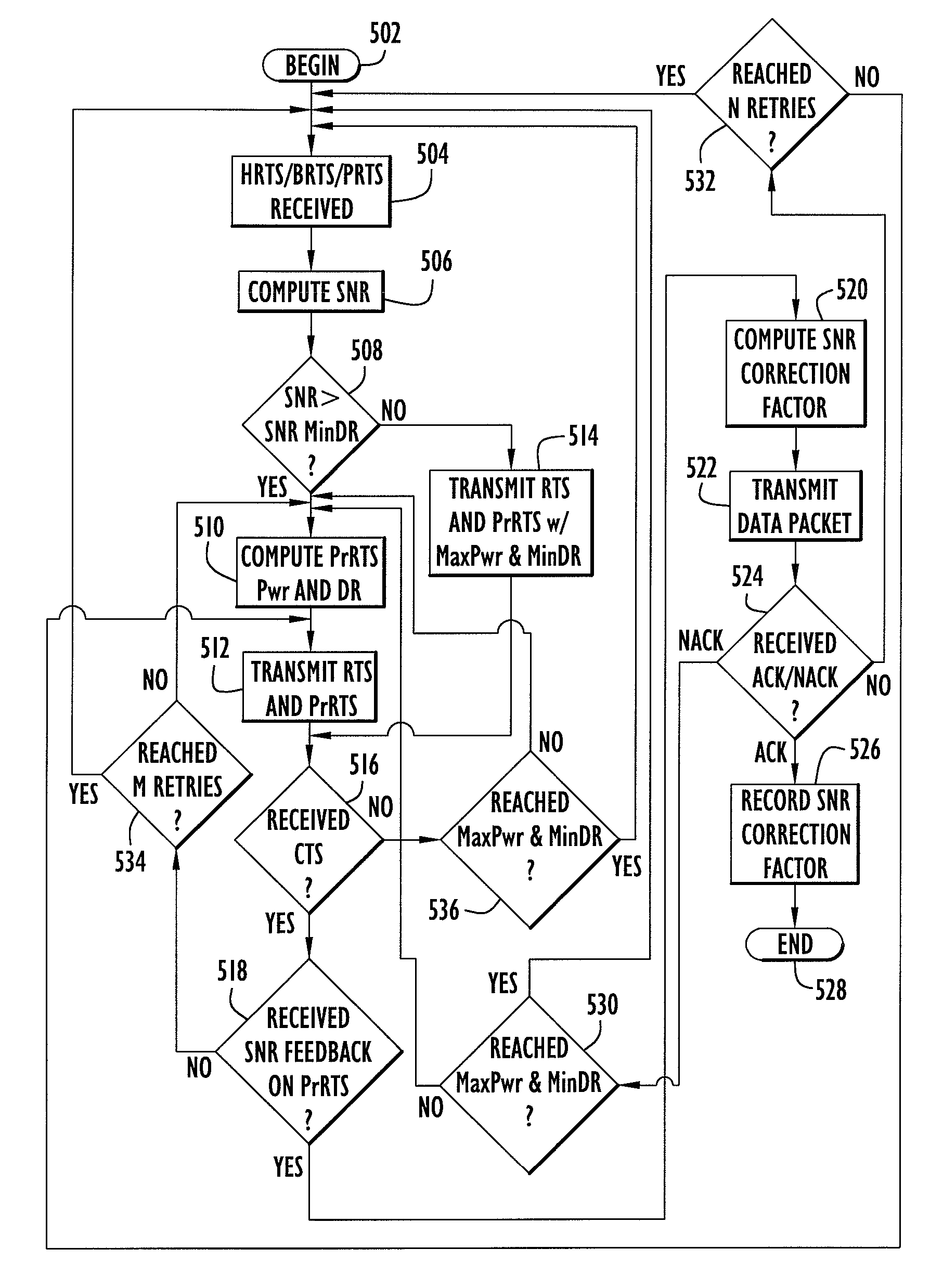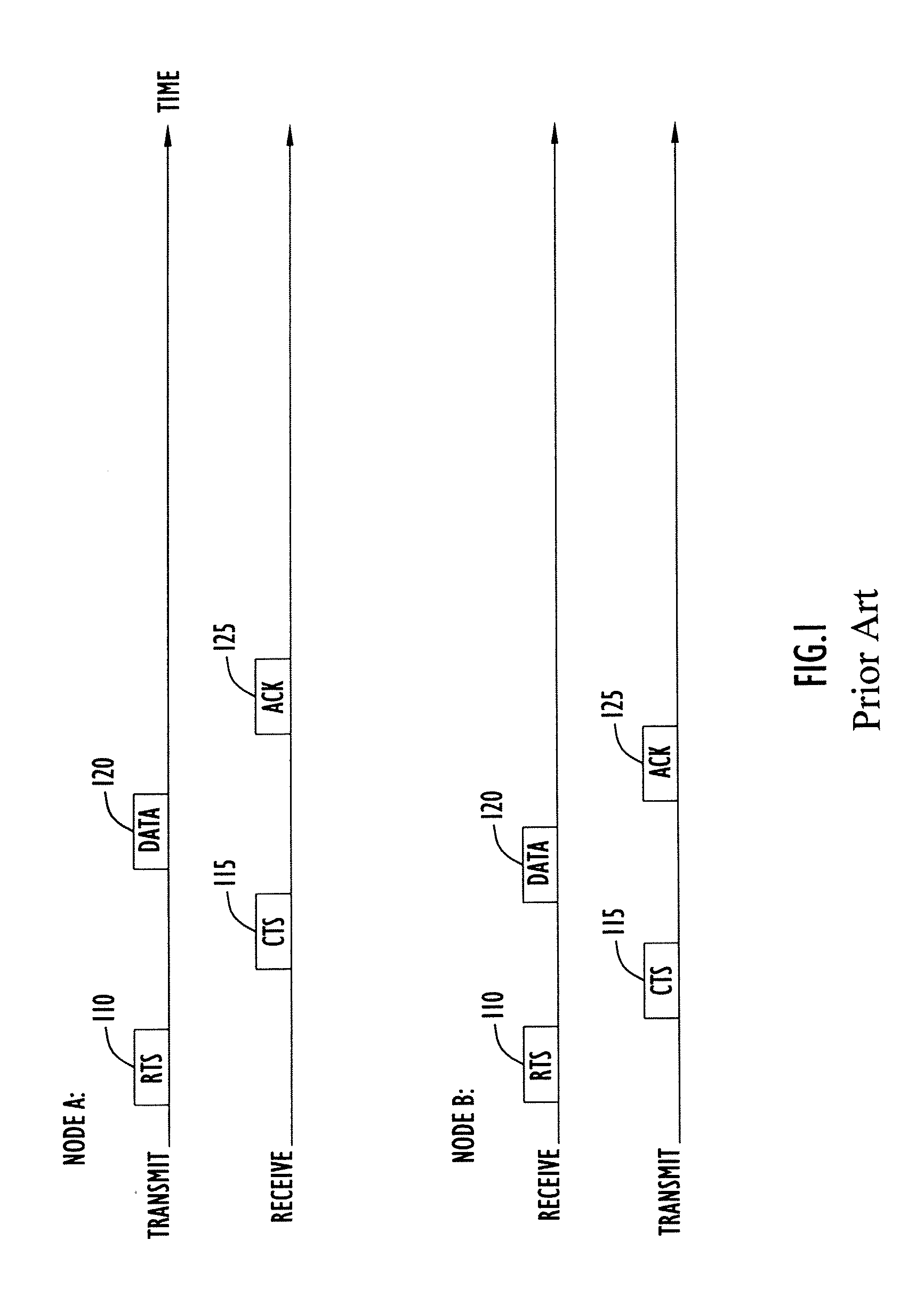Adaptive power and data rate control for ad-hoc mobile wireless systems
a mobile wireless and data rate control technology, applied in the field of telecommunications, can solve the problems of ensuring asymmetric link in an ad-hoc wireless system, power control techniques used or proposed for cellular systems are not suitable in an ad-hoc environment, and the code division multiple access (cdma) system cannot achieve the capacity needed
- Summary
- Abstract
- Description
- Claims
- Application Information
AI Technical Summary
Problems solved by technology
Method used
Image
Examples
Embodiment Construction
FIG. 1 illustrates a conventional Carrier Sense Multiple Access (CSMA) sequence diagram where Node A requests and sends a data packet to Node B. CSMA is a conventionally-used protocol in, e.g., ad-hoc wireless networks. In the case shown, a single frequency is assigned to all logical channels (i.e., both the reservation and data channel use the same frequency). As shown, Node A transmits an RTS packet 110, which Node B receives. In response, assuming Node B was able to receive and properly demodulate (generically, “receive”) the RTS packet 110, Node B sends a CTS packet 115. Thereafter, Node A sends data packet 120, which is received by Node B. Assuming data packet 120 was properly received, an ACK packet 125 is sent by Node B and received by Node A, thereby completing a data exchange between Node A and Node B.
FIG. 2 illustrates a variant of the sequence shown in FIG. 1. Here, RTS 210, CTS 215, data 220 and ACK 225 packets are exchanged, but instead of all the packets being transmit...
PUM
 Login to View More
Login to View More Abstract
Description
Claims
Application Information
 Login to View More
Login to View More - R&D
- Intellectual Property
- Life Sciences
- Materials
- Tech Scout
- Unparalleled Data Quality
- Higher Quality Content
- 60% Fewer Hallucinations
Browse by: Latest US Patents, China's latest patents, Technical Efficacy Thesaurus, Application Domain, Technology Topic, Popular Technical Reports.
© 2025 PatSnap. All rights reserved.Legal|Privacy policy|Modern Slavery Act Transparency Statement|Sitemap|About US| Contact US: help@patsnap.com



